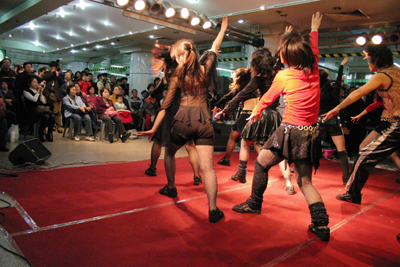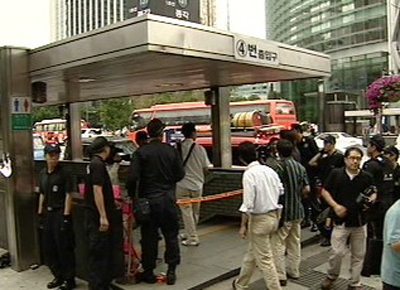
Tony: “Mommy, look at that! See that snow white lump of ice! I would like to have that! Take it out of the water!”
Mom: “Oh baby, I am sorry I am unable to pick that up. That is the tip of an iceberg.”
Tony: “What is the tip of an iceberg?”
Mom: “Sweaty~ The ice you are looking at is not all there is to it. Under the water, there is an even bigger lump of ice that is covered.”
Have you heard of the idiom “the tip of an iceberg”? It means “something that shows or suggests a much larger problem” (ESL Monkeys, 2004). As an example let us suppose, there are two buildings in the city. One has six floors above ground. The other has nine floors above ground. If so, which is the bigger building? Somebody says, “The latter.”
Well… Do not forget “the tip of an iceberg”! You have to look underground by bending your body. What if the former building has three floors under ground? In fact, it is connected with a subway and underground shopping center. Thus, the building is more energetic and has more earning potential. Let’s look more closely at these underground activities- we will begin to understand the meaning of ‘the tip of an iceberg’.

We have been living a busy life. We must get up early in the morning and jump into a society with keen competition . To go to the office, more than half take the subway. On the way to their places of work, they pass through the subway quickly.
However, the underground atmosphere is not a place for just passing through or having heavy feelings any more .
The path through the subway is interesting. In this new underground world, there are places to eat, shopping centers, fancy shops, and so on. Even though some people do not take the subway, they still come to the underground for shopping.
In addition, the underground has become a space of culture and art. For example, hip pop dancers (B-boy), and musicians give outdoor, underground performances. Moreover, it offers places to rest and meet others.
Yet, these are not all the key points yet. For a certain distance around the subway stations, there will be more expansions and, moreover, revitalization of businesses for some years ahead. A real estate appraiser says that people with a Midas touch, “the ability to make a lot of money” (The Free Dictionary, 2007), are planning projects. They are holding their land from sale, and instead are setting their minds to an underground shopping center, because of the low tax burden and fixed returns. Also, local communities have promoted development of the subway stations surrounding areas, because local communities can get out of an economic slump by taking advantage of their increasing circulating populations.
But, there is much to contend with such revitalization.
First, underground areas bring on hypoxia. According to a research by Professor Park Dong-uk, who has served in Korea National Open University, most people who use subway or surrounding areas develop respiratory ailments, such as a heavy feeling in their chests, when breathing .
Second, it is difficult to ensure the public’s safety in cases of emergency. Just 8 months ago, a poisonous gas spread quickly in
Third, there is the matter of loud sounds and noise. People using the subway and surrounding stores complain about the noise. Since commerce space is crowded, the underground world can become ear-splitting. In fact, they feel pain from the vibration of sounds. Above all, this pollution level is a serious problem.

Finally, let us take an example about food. The food from a food-court is shabbier than an underground’s. Mrs. Choi Soon-young, who works at Etude House (cosmetic shop) located at Kang-nam station for three years said, “I no longer eat food which is served in the underground shopping center, because most of time, I can be aware of an unpleasant, not fresh taste. Of course, I am very careful about details. Anyway, I do not want such food.”
As a matter of fact, one research company made an investigation into underground food and the foods above ground. According to the research, boiled fish paste sold in underground shopping centers was dirtier than the others. They also discovered that the content of carbon monoxide was higher by about 20 percent.

So far, we have recognized the problems of the underground world. To solve these problems, what should we do? First of all, we can look around the cases of other counties.
In an American subway, the
Like this, the American underground traffic system is moving towards miniaturizing the metro areas. On the other side, our policy line is the magnification of the metro area. Some might insist that it would be better to follow the American policy, because
To have success with this idea, we have to improve our under world system. The most serious problem is the concern with the environment. The quality of air is important. Thus, each province should be responsible for improvement of the environment. For instance,
Finally, if the appropriate pollution meter is over a standard point, there should be an automatic warning sound or alarm. However, these policies have not been settled yet. On the other side, in the case of local government issues, the subway system and underground are still in their early stages. Dae-jeon province did an opening ceremony a few months ago. So, the underground of the city is still invigorating to its local citizens.


